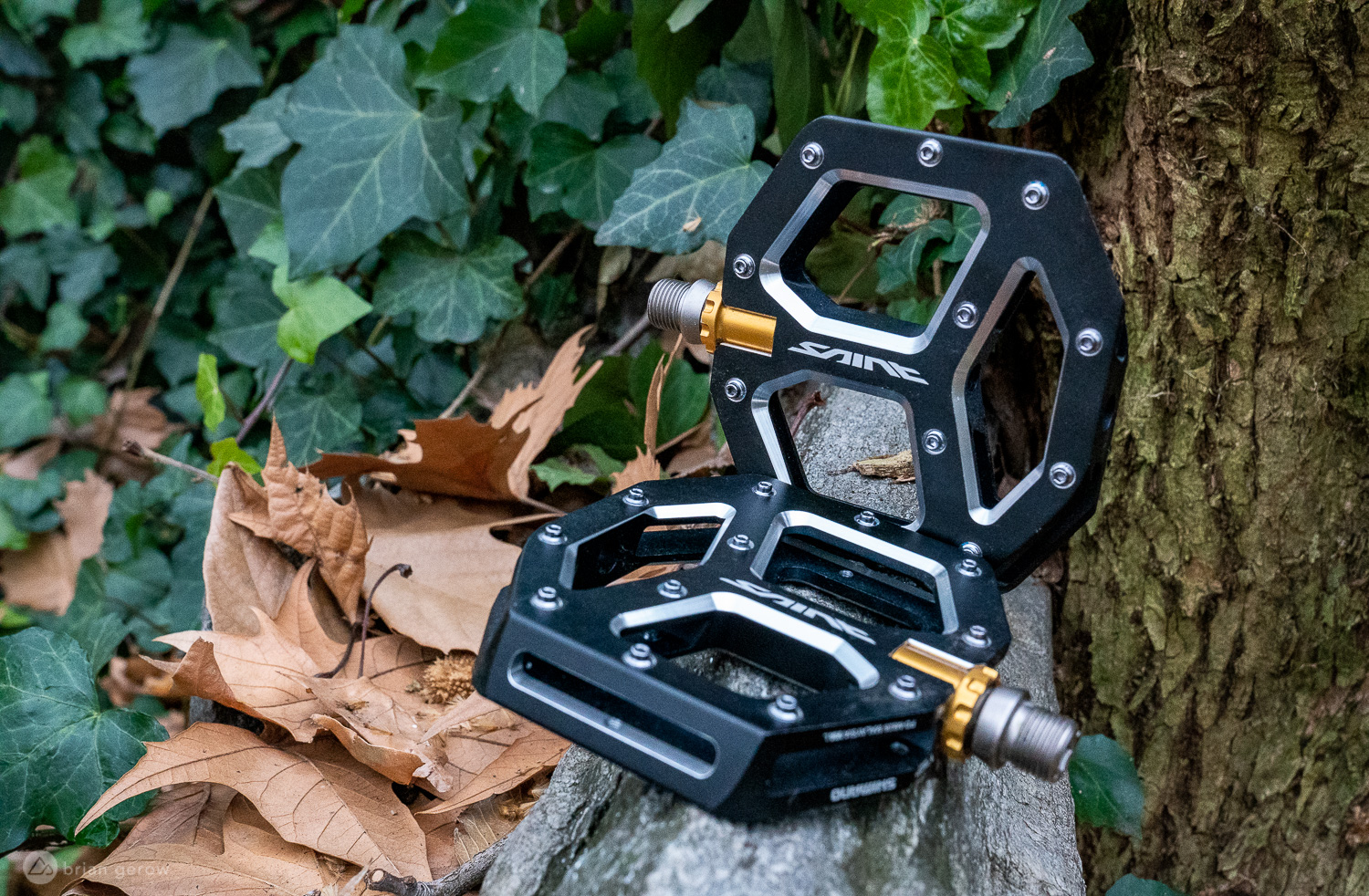
The sensation of being physically attached to a bike inspires confidence in some folks while welling fear in others. A growing number of riders and racers have started ditching their cleats in favor of flat pedals over the past few years, and I recently had a chance to chat with one of them about the benefits of their newfound platform.
Veteran shredder Sean Corey lives in Vancouver, Washington, a shadow city alongside Portland’s wafting plumes of freshly roasted coffee and craft beard oil. He began riding mountain bikes sometime during his skate-or-die youth and now spends more weekends at the trailhead than not. Corey lined up for countless XC and cyclocross starts throughout his dirt tenure, always on clipless pedals, as the cultural norms of those genres dictate. In the last several years his riding interests slid heavily toward the gravity category, and in the fall of 2019 he decided to give platform pedals a shot. Thus far, he has largely positive things to report.

Sean approached the step to flat pedals methodically, dedicating ten rides to unattached pedaling followed by notes on which aspects felt different, better, or worse about the experience. From there he hoped to understand when and where flat pedals might offer an advantage. He purchased a set of OneUp Composite pedals from a buddy to accompany a new pair of sticky Five Ten Freerider kicks. He was ready to find some answers.
Looking back through his notes, and picking his brain, Sean remembers thinking that jumping on flats would be difficult. He had the sense that “the bike would just sort of fall out from underneath.” He was also skeptical about climbing without the ability to pull up and across the pedal rotation. To best prep for the trail, he decided to start by dialing in a solid bunny hop technique on flats. Knowing that the technical elements of a bunny hop are crucial for an array of on-trail maneuvers, this was a wise place to begin. He practiced compressing through his feet and scooping the pedals to lift the rear end. Once his hops came as confidently as they had clipped in, he was ready to shred.

On the nearby Cold Creek trail system, Sean set out to test his new pedals on tracks that were included in an enduro he had recently raced. On smooth climbs, he noticed a need to focus more on the pedal stroke and scooping the pedal with his foot along the back curve, whereas with clips he could simply pull up. For more technical bits he said, “I have to really use my momentum and power, and really look ahead on the trail.” Overall, Sean doesn’t feel that he lost any power or ability climbing on flat pedals, and he mentioned that the technique required to ride flats has improved and refocused his overall riding skills. Refocusing and skill sharpening are themes throughout the pedal swap.
The descending and cornering advantages worked out immediately for Sean. “You have this confidence that’s just immediate. You can really push into corners, even if your feet are level, and your body position changes quite a bit. I thought I wasn’t going to be able to feel glued to the pedals, but I found that popping in and out of a series of corners was so much more fluid. Carrying momentum out of corners feels much easier and I don’t find myself having to sprint.” As an avid bike racer, Sean knows the importance of exiting corners as hot as possible, and he was stoked to feel more comfortable and confident carrying speed throughout the turns.
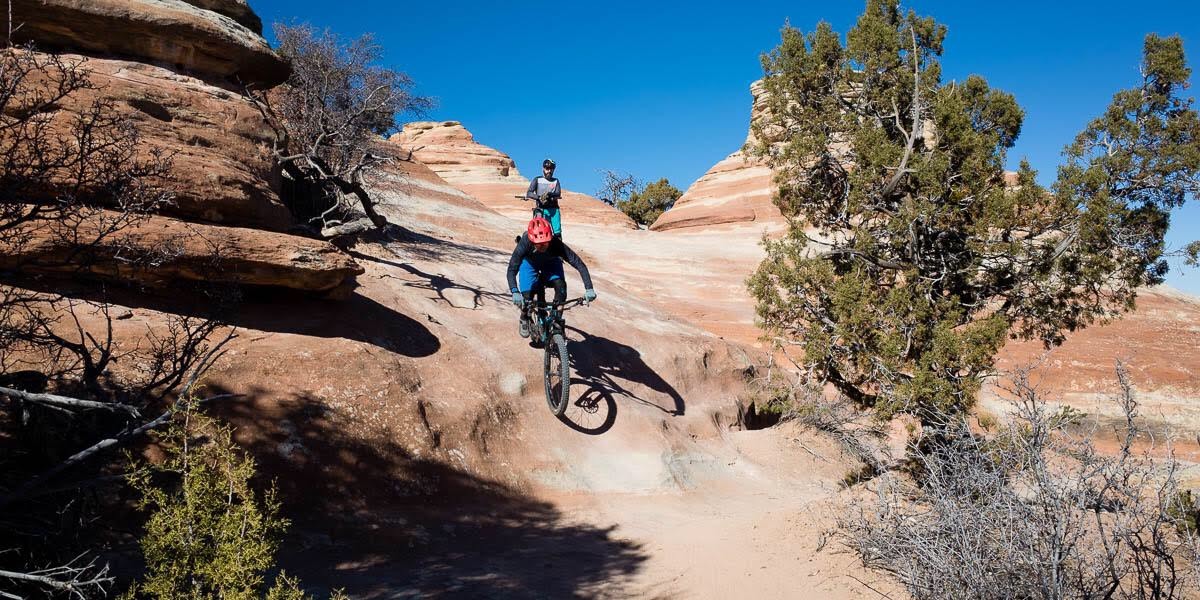
Drops were one of the most challenging trail elements to master while unclipped. “The first couple of times I did drops that I was totally fine with clipped in, it was shocking. I did a few smaller drops and landed hard on the pedal. I had to really hone that skill set of making sure my heels were dropped and making sure my body position was perfect off the drop. And now it’s second nature.” This sensation of the bike falling out from underneath was unnerving for Sean, and it quickly forced him to rethink and refine his form.
Aerial skills are the number one piece that he wanted to test, and fortunately, that’s where he found the greatest improvement in his riding. Between the foot position, and the confidence that comes with the easy-eject-option, he’s been able to drastically improve his jumping technique. He noted that jumping with flats requires a more precise technique than clips, and that forced learning improved his ability to jump almost immediately. Some of the nuances Sean noticed were that he needed to preload the bike more and use his feet to drive through the face of the jump. “You have to rely on that, because you can’t rely on pulling your foot up if you [mess] up in the middle of it. The scooping technique I learned while practicing bunny hops translates really well.”
Regarding foot position, Sean says that “on climbs I put my foot in that same position I would if I was clipped in, but for descending I place it a little more forward so I have that toe wrap.” He did mention that one less than favorable aspect of moving to flats comes up whenever he manages to place his foot too close to the crank arm, resulting in a pinching or trapped sensation. He recalled that placing his foot too far toward the outer edge of the pedal hasn’t been an issue, but when his foot contacts the crank arm he has to look down and reposition it.

Sean has since fully converted to flat pedals. He said that he will still race enduro in clipless pedals for the pure power advantage, and may do some longer backcountry adventures clipped in, but the longer he rides clipless the more reason he is finding to continue doing so. It took him about four rides to feel comfortable on the pedals and he began focusing on improving his body position from there.
I will soon be giving flat pedals a go for the first time since my youth, and look forward to sniffing out some of these potential benefits that Sean experienced. If you have recently switched from clips to flats, please share your story in the comments. We would love to hear what techniques you used, what feels different, and what pedals you mount up for the ride.
Sean’s perceived flat pedal advantages
- Gained cornering confidence with the ability to dab.
- More comfortable jumping with added mobility on the bike and no concern about clipping out.
- Renewed focus on all skills thanks to the new platform, with some notable skill improvement.
- Flats require a more full-body bike handling balance that adds focus and engagement.
- Near infinite foot positions
- Easier to bail out or move around on the bike.
- No more issues with loose cleats, sloppy pedal springs, or mud-packed cleats.
- It’s easier to drive to the trail in flat pedal riding shoes.
- You get cool new shin scars.
Possible disadvantages
- Shin scars.
- Loss of power.
- Slightly less clearance to pedal through rocks and tight turns.
- Consistent foot placement requires more attention.













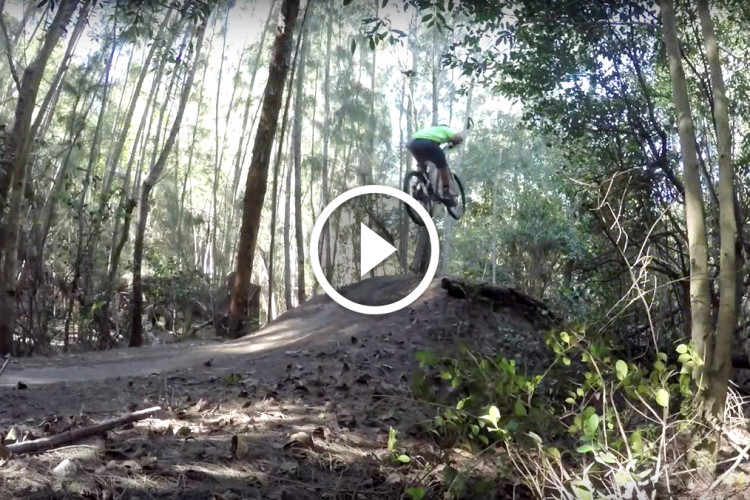
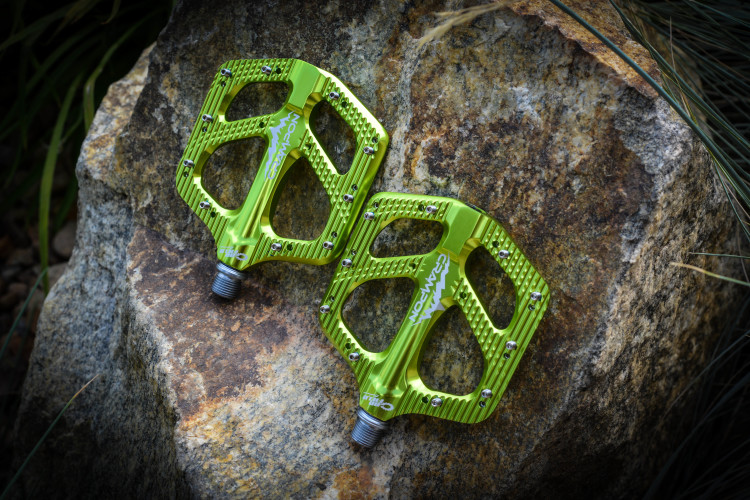
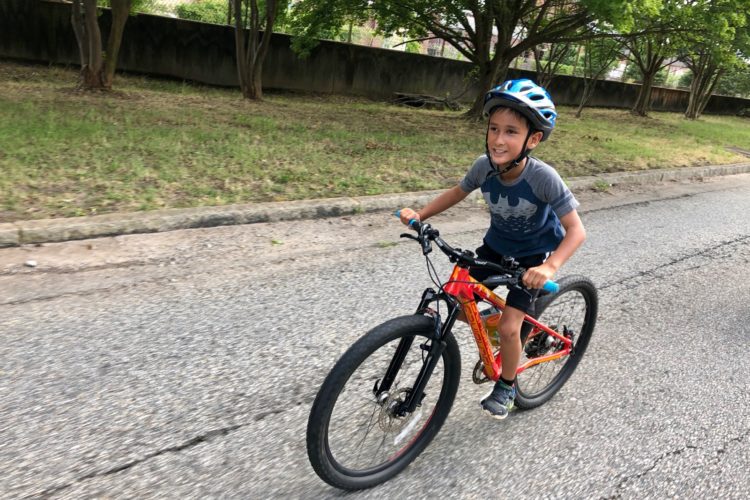
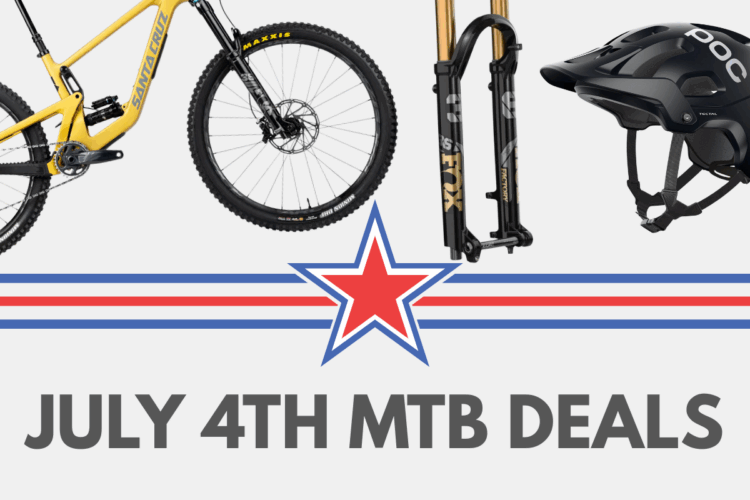
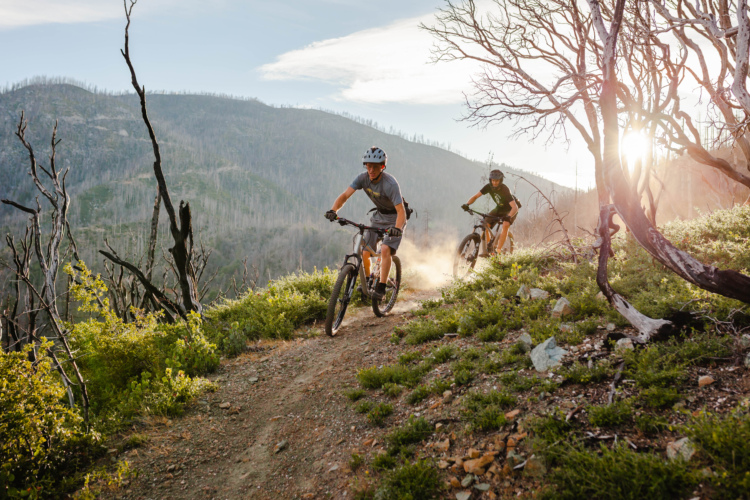
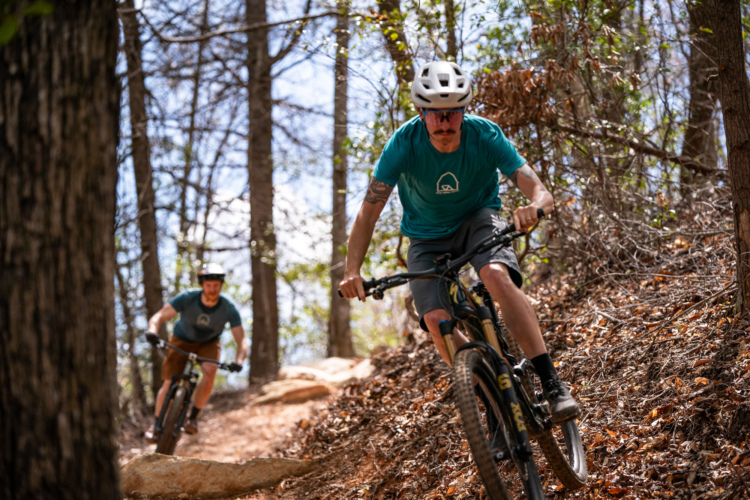


24 Comments
Jan 18, 2020
This is it.
I was super comfortable in the “Egg Beaters” as I used them every day.
Getting to like the flats. Still sometimes don’t have my feet in what feels like an ideal position, which is for me a distraction that doesn’t occur with clip ins.
Whatever I end up doing, doesn’t really matter, but am glad I’ve given the flats a go, and learned some new techniques.
Jan 16, 2020
The first cages included leather straps that once done up meant feet were NOT coming out without manual release. (Yes, I’m old)
For years I have been riding with Crank Bros “Eggbeaters”. I love them. So fast and reliable to release. Recently I had a front end “lose” and my foot was on the ground before I knew it. I was actually surprised.
More recently I cartwheeled over a jump and detached one Hamstring from the bone. The surgeon assured me it was due to that foot remaining clipped in at the crucial moment. And barred me from clip In peddles for three month recovery.
I also signed up for some coaching (Unbelievably good, in so many ways - anyone on the Sunshine Coast QLD should look at it!!)
They also recommend flats to learn the correct technique. (Which, after 3 lessons is coming along great)
The first few rides on my new bike, with freshly attached Hamstring, Five 10s, and V12s felt pretty un confident. (for several obvious reasons)
My 3 months are up, but still doing coaching and riding on the flats.
I don’t feel there is much advantage in the flats. But am slightly nervous now about returning to the eggbeaters.
I ride kind of “Old Mans Enduro” style. Pedal up plenty of hills, but enjoy the jumps/berms/obstacles on the way down the most.
(Previously I’d clip in for anything, no matter how technical. I was so fast to get out, I was considering putting the egg beaters on my unicycle. Never got past “considering”!!)
As I get better technique, and “used too” the flats, the less sure I am, that I’ll return to clip ins.
Jan 17, 2020
I have to admit that I look at today's flat pedal enthusiasm with skepticism. Yes, flat pedals force the rider to focus on skills and technique. They also allow quick bail outs when needed. But are they really superior to my old fashioned toe clips and straps? Or is this more of a do what you feel comfortable with and what works for you situation?
Jan 14, 2020
Jan 13, 2020
Jan 13, 2020
Apr 23, 2021
Jan 14, 2020
Jan 13, 2020
Jan 13, 2020
Jan 13, 2020
Jan 14, 2020
Jan 13, 2020
Jan 17, 2020
Jan 13, 2020
Jan 13, 2020
Jan 14, 2020
Jan 13, 2020
5-10s and RF Chester flats.
Jan 14, 2020
Jan 13, 2020
Jan 14, 2020
Jan 13, 2020
Jan 13, 2020
Jan 14, 2020